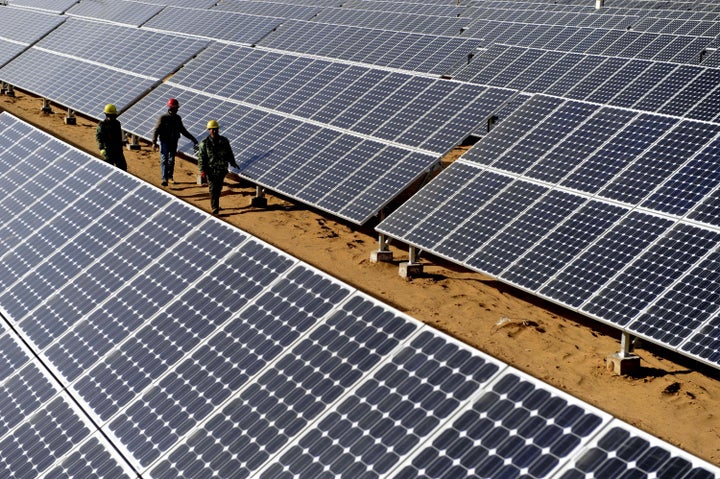
The recent hurricanes, floods, wildfires and tornadoes have only underscored the overwhelming task at hand needed to rebuild America's infrastructure.
Those families with their homes still intact -- and who have solar panels -- are not worrying about power outages because of the collapse of our 19th-century technology of stretching extension cords from wooden pole to wooden pole. They have electricity because they already started rebuilding America: One house at a time.
Now is the time to do that on a grander scale because if you're going to "rebuild America," shouldn't you use the latest, high-tech sustainable technology?
The government estimates that unemployment will hover around 9 percent through 2012. It is unclear if the estimate includes the influx of a disgracefully high number of unemployed veterans this country will continue to take in. Any worker-training programs and tax breaks for employers who hire the unemployed should include an extra incentive for companies that contribute to the green energy economy and hire veterans.
Critics of "green jobs" from a subsidized solar industry will point to recent Chapter 11 filings by Evergreen, SpectraWatt, and Solyndra -- which received a $535 million federal loan guarantee to build a factory President Obama visited in May 2010.
But Washington has a short attention span.
When BP fouled the Gulf of Mexico and devastated the livelihoods of countless Americans, did Washington cut subsidizes to the oil Industry? Or when the Nuclear Regulatory Agency (in the wake of Fukushima, and the East Coast earthquake that "could never happen") recently conceded that some U.S. nuclear power plants are more vulnerable to earthquakes than previously believed, did Washington cut subsidies to nuclear power?
When NASA lost two shuttles, Washington didn't cut their funding either. Instead, they waited until NASA got it right and then sent their engineers to the unemployment line and bumped America out of the #1 high-tech space industry spot -- probably forever.
That could happen with America's solar energy industry. The new "Silicon Valley" high-tech sector is the solar, electric vehicle and "smart" housing industry -- all requiring infrastructure, manufacturing and labor. But without a bold, long-term commitment and incentives to drive these technologies, the U.S. will continue to play high-tech catch-up.
Consider this: Solar power was invented in the U.S. as a spin-off of the space program. But our largest solar energy import is solar panels, spending $2.4 billion in 2010 while exporting only $1.4 billion worth, according to an August 29, 2011, Solar Energy Industries Association study. What's worse is our largest solar industry export was $2.5 billion worth of polysilicon, the material used to make solar panels. In other words, were selling the raw material to other countries that build the solar panels we invented so they can sell them back to us. How does that make sense?
China remains the leading exporter of solar panels, manufacturing about 40 percent of the global supply.
One bright spot is the U.S. Export-Import Bank's recent $575 million in loans to companies building solar power plants in India on condition they purchase the needed solar equipment from U.S. firms. Congress authorized EXIM to lend as much as $100 billion to finance such projects that buy U.S. goods. The problem is that many U.S. companies actually manufacture their solar products overseas, so the jobs are not here.
A July 2011 Brookings Institution study found green jobs account for only 2 percent of workers nationwide. But there is a growing need for technicians and skilled laborers to serve the new solar energy-based economy. Ezra Auerback, Executive Director of the North American Board of Certified Energy Practitioners, has noted that the key to growing the solar industry is training and certification, rather than hiring "anyone with a screw driver, wire stripper and ladder."
The United States is still a player in the solar industry and to stay in the game means Washington needs to take decisive action promoting solar energy and the jobs it creates. Solar Energy Industries Association statistics show that for every job created by the solar industry, between 1.8 and 2.8 non-solar jobs are created as well. And it is about jobs, right?
But "change we can believe in" sometimes takes some prodding.
If President Obama is truly worried about jobs, then there should be an incentive for him to worry about his own. What if the labor unions, U.S. environmental organizations, and all the solar and wind power industry associations issued their own, uncompromising job plan: "Mr. President, unless you issue a big, bold plan to create long-term, labor-intensive green jobs, our members will be shopping for a new Presidential Candidate in 2012."
How fast do you think solar panels would go up all over Washington if that happened?
